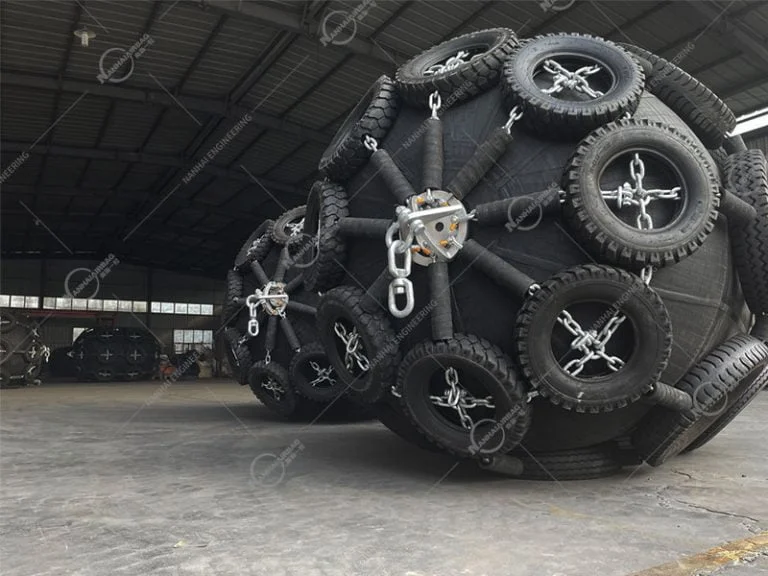How Are High-Quality Rubber Fenders Produced?
07/18/2025What Causes Damage to Pneumatic Fenders?
07/18/2025How to store pneumatic fenders ?
Why Storing Pneumatic Fenders Properly Is So Important
Have you ever had pneumatic fenders fail right when you needed them? Maybe it lost pressure, cracked, or became deformed after being stored for a few months. At NANHAI, one customer recently reported a fender that failed just six months after purchase—all because it was stored carelessly outdoors.
This is not rare. Whether you’re in a shipyard, a port, or a marine construction site, fenders often stay unused for weeks or months. That’s why knowing how to store pneumatic fenders properly is urgent and necessary.

Key Tip: Store Well, Use Longer!
Keep some air inside the fender during storage.
Store in a dry, cool, shaded place with good air flow.
Don’t stack fenders or place heavy objects on them.
Check fenders every 3–6 months. Add air, clean, and inspect.
NANHAI Tips: 4 Ideal Pneumatic Fenders Storage Conditions
1. Keep in a dry, cool, well-ventilated indoor area
Ideal temperatures: 10–27 °C (50–80 °F). Avoid heat from engines, heaters, or machines.
2. Protect from sunlight and ozone
UV rays and ozone damage rubber. Store the fenders under a roof or cover.
3. Store with low internal pressure
Keep light air pressure (20–30 kPa) inside. This prevents the fender from folding or sticking.
4. Avoid stacking or pressure
Use support racks or wooden pallets. Keep each fender separate to avoid deformation.
NANHAI Guide: Step-by-Step Pneumatic Fender Storage
| Step | Action | Reason |
|---|---|---|
| Clean | Wash with water and mild soap | Remove dirt, salt, and mold |
| Inflate | Keep light pressure inside | Maintain shape and structure |
| Support | Use racks, tires, or wooden blocks | Avoid pressure and uneven weight |
| Inspect | Check every 3–6 months | Spot leaks, damage, or weak spots |
Why It Matters: Benefits of Proper Storage
- Longer service life – no need to buy replacements often
- Better safety – fewer unexpected failures
- More efficient use – easy to find, inspect, and deploy your fenders
At NANHAI, we help customers reduce downtime and save money with expert storage practices.
FAQ – Pneumatic Fenders
Q1: Can I store a pneumatic fender with no air inside?
No. Always keep low air pressure to avoid rubber sticking or shape loss.
Q2: How often should I check stored fenders?
Every 3–6 months. In hot or wet climates, check more often.
Q3: What’s the best temperature for storage?
Between 10°C and 27°C (50°F to 80°F) is best.
Q4: What should I avoid near stored fenders?
Keep away from sharp objects, heat, chemicals, and ozone.
Final Thought: NANHAI Makes Storage Pneumatic Fenders Easy
Storing your pneumatic fenders the right way saves money and avoids problems later. At NANHAI, we offer full support—from cleaning and inflating to building storage racks.
Contact us today for a storage plan that fits your space, climate, and schedule. With NANHAI, your fenders stay safe—even when they’re not in use.
